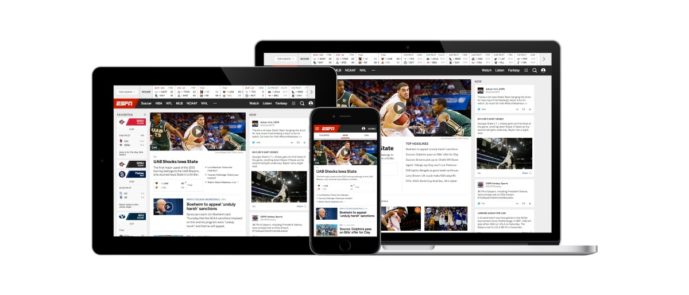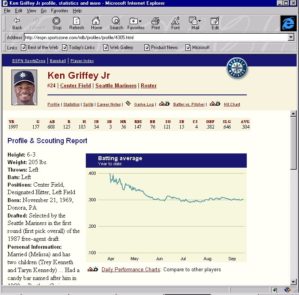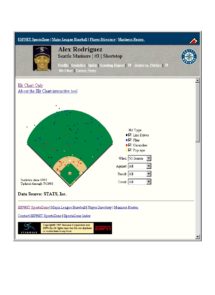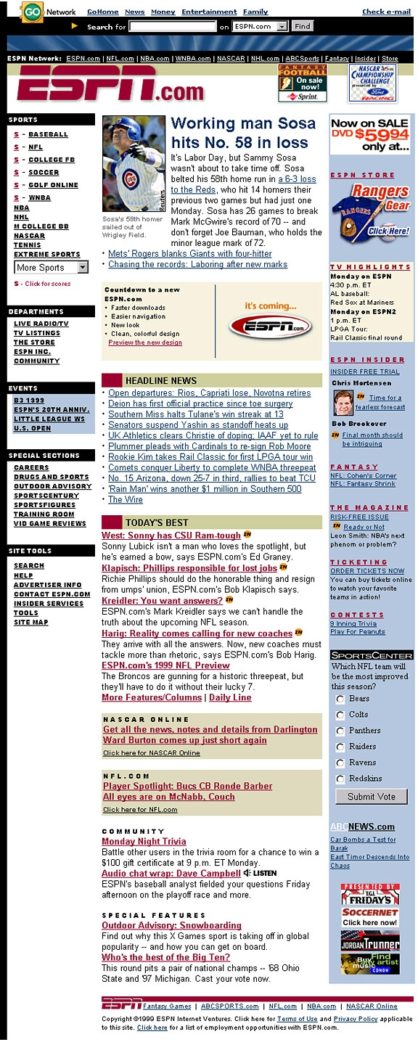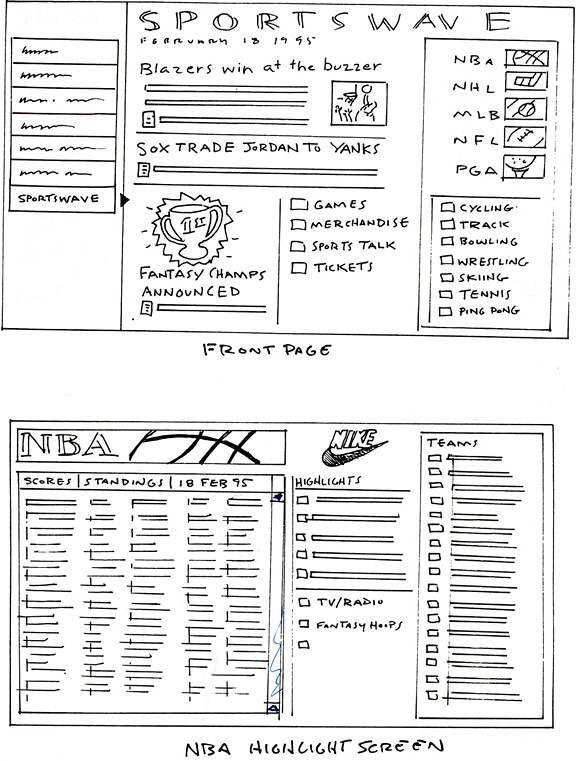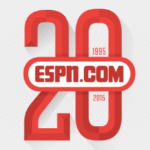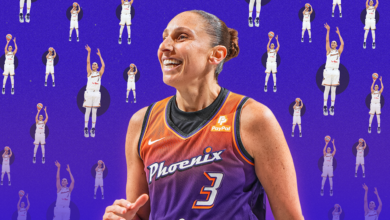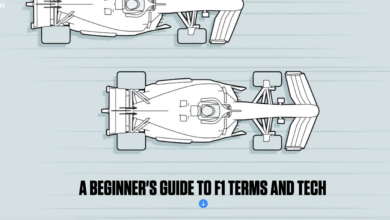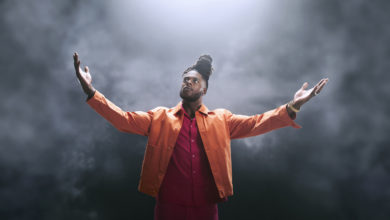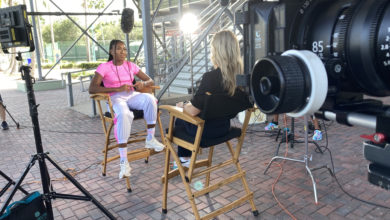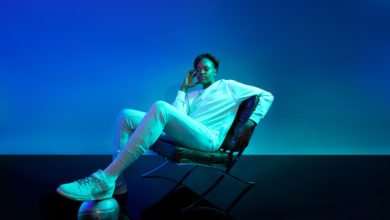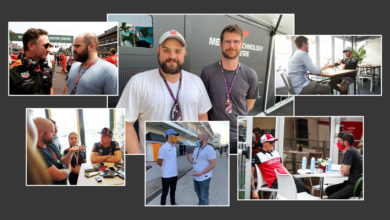Then & now: The many faces of ESPN.com through 20 years
Editor’s Note: In celebrating its 20th anniversary, ESPN.com unveiled its new site Wednesday. It’s the first major makeover of ESPN.com in more than five years, and it is completely rebuilt from the ground up. This week, Front Row presents discussions with ESPN.com’s leaders past and present exploring the sports news and information site’s growth.
What have been the most important developments (or setbacks) since ESPN.com’s start in 1995 that shaped the way sports, digital media and technology intersect? Etsy CEO Chad Dickerson and Josh Sapan, President and CEO, AMC Networks Inc., answer that question.
Dickerson: In an on-demand world that is sliced and diced ad infinitum and where nearly everything can be viewed at one’s preferred time, sports stands out as the last truly shared experience in our culture. With Twitter in particular, all the best aspects of watching sports – trash-talking with your friends, admiring improbable plays, and celebrating (or commiserating) at the end of the game – are amplified and shared. Twitter only improves the experience of watching sports, making it feel like you’re in a stadium even when you’re in your living room. The old gathering place of the local sports bar is being replaced by the hashtag, and the end result is more fun than ever.
Sapan: Different media platforms are increasingly being used at the same time. News, sports and even dramas don’t need to ask people to read, respond, tweet, post pictures or text; they do it automatically, sometimes on two or three separate devices or screens, and often on the same screen. This has increasingly made media interactive and often a virtual community, influencing the very manner in which news and sports are covered and in which dramatic stories are written and shot. As a guy once (almost) said: ‘The medium is influencing the manner of the message’.
Over the past 20 years, ESPN.com has become the ever-present sports page for hundreds of millions of fans. During that time it has evolved many times and influenced the media landscape and consumption habits of sports fans. As reflected in the debut of the new ESPN.com yesterday, design plays a key role in the user experience and how ESPN has created the site and other digital products. Front Row spoke to the original creative director about the very first ESPN.com designs and current ESPN digital product team members on the work that went into the aesthetics of the new site.
Can you share the concepts and challenges behind the original designs for ESPNET SportsZone in 1995?
Greg Hollobaugh (original creative director, Starwave): These early sketches [the last slide in the gallery above] were actually for the Ziff-Davis Interchange Network, which was going to be its own platform similar to AOL and Compuserve. Mike Slade later made the decision to focus our sports efforts on the web, which seemed pretty crazy at the time, since there were no real business models for websites in 1994.There weren’t a lot of design options and the web was pretty ugly – pages didn’t have columns, typography was limited and there were passionate debates over putting blue boxes around anything clickable, which was the standard practice back then. One of my early design concepts for Satchel, the true precursor to ESPN.com, was a single graphic inspired by the Fenway Park scoreboard – no headlines or photos, just navigation. Photography, of course, was also a challenge. The Associated Press and all the other photo sources were very nervous about putting their photos on the web where people could easily copy them.
What were the key artistic design elements that went into the new site’s design?
Vice President, Creative Director Creative Director, ESPN Digital and Print Media, John Korpics: Our site is incredibly deep and complex, so the job of the visual and user interface design is to make it easy for the fan to get where they want to go and discover things naturally. For that to work best, we needed a very clean, well-organized, easy to scan and navigate experience. We defined benchmarks – typography, iconography, hierarchy, color palette, spacing, tables, read experiences, scoreboards, light environments and much more – to allow the content to rise to the surface. We then applied those ideas to the strategic goals and experiences. All of this was done with the goal of ensuring parity with our ESPN app and consistency across our digital products.
During the beta, what kind of feedback did fans share about the new design?
Jarrod Schwarz, senior director, ESPN Digital Product: Feedback from fans has been an integral part of redesigning ESPN.com. Through a combination of user testing and an extended beta, we have listened to our users and evolved our experience. From Day 1, users have told us they want easier access to content about the teams they love. We’ve made it easier than ever for them to find and consume the stories they care most about through the personalized homepage, streamlined navigation and curated reading experience. While much of the feedback we’ve heard in the beta has been positive, change is always met with resistance. While it can take time to get accustomed to the new site, we have found that users become familiar with the layout and ultimately enjoy the experience.
How does the design of the new ESPN.com fit into the larger digital product strategy?
Senior Vice President, Digital Product, Ryan Spoon: First, we are no longer designing and creating individual products – rather, we are trying to unify our various properties. Design plays a very key role in achieving this. ESPN.com’s new design both pulls on themes set in other products (ESPN and Fantasy Football apps, for example) while setting design precedents for the future. Fans will now find familiar aesthetics, animations and navigation principles across our product suite. Second, usage continues to outpace traditional computers, so it would make sense that we design and build first for mobile devices. Lastly, April 1 was just the beginning of a new ESPN.com. We have a robust roadmap of new features, pages, and products – but we will also monitor and react to fan behavior and consumption patterns.
